Vintage Alaska Maps
Alaska, located in the extreme northwest of North America, was the 49th state admitted to the union. It became a state in 1959 and is the largest U.S. state by area (it has more area than California, Texas, and Montana combined).
In our historic map archives, you’ll find a collection of vintage maps of the entire state of Alaska dating back to 1867, as well as a stunning 1937 map of Mt. McKinley National Park.
If there’s a specific Alaska map you’re looking for that you don’t see here, let us know, and we’ll check our archives. While our collections of vintage maps are extensive, there are still many more we’re restoring, and chances are we’ll have what you’re seeking.
About Alaska
Around 13,000 years ago, a 600-mile wide patch of land connected Russia to Alaska. It’s believed that the first people to arrive in what’s now Alaska came via this piece of land, which was called the Bering Land Bridge. The indigenous population inhabited the area for thousands of years before the Europeans arrived in the late 1700s.
About a hundred years later, in 1872, gold was struck near Sitka, on the Kenai Peninsula. The state’s first significant gold strike was eight years later in a creek in Juneau. Prospectors rushed to Alaska in these early years, and it wasn’t long before the state’s Gold Rush was in full swing.
Even the legendary Wyatt Earp showed up in Alaska, but it wasn’t necessarily for the gold. He was fleeing an indictment for murder following the infamous shootout at the OK Corral in Tombstone, Arizona. Earp opened a saloon in Nome, Alaska, that catered to miners, travelers, and the town’s residents. His drinking establishment (the Dexter Saloon) is long gone, but Nome City Hall was built where it once stood.
Like many Alaska towns, Nome has a small population (around 3,700 residents call the town home). The largest city in the state is Anchorage, with a population of just shy of 300,000. Fairbanks and Juneau (the state’s capital) come in next on the list, but their populations are much smaller, at around 32,000 each.
Today, Alaska has a reputation for being cold, and that’s with good reason—much of the land you walk on in the state is covered in a layer of permafrost. But Alaska is an outdoor lover’s paradise with vast land and wilderness that entices adventurers who love fishing, hiking, canoeing, kayaking, river rafting, hunting, skiing, snowboarding, and more. More than half the state is public land that’s federally owned. And then there’s Denali, Alaska’s crown jewel. The snow-capped mountain is the tallest in North America.
Tourism helps feed Alaska’s economy, as does fishing, oil production, research and development, and United States armed forces bases. However, the state’s top five largest employers are in the health, retail, and energy sectors. They are Providence Health & Services, Walmart, Safeway, Fred Meyer, and ASRC Energy Services.
Finally, when it comes to Alaska by the numbers, the figures are quite impressive. The state has 3 million lakes, 100,000 glaciers, 12,000 rivers, and around 34,000 miles of tidal shoreline.
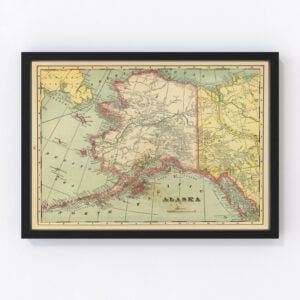
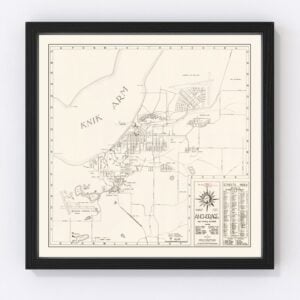
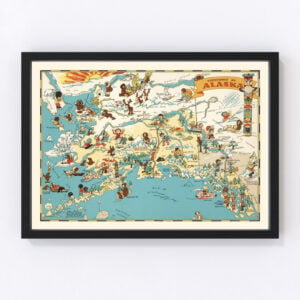
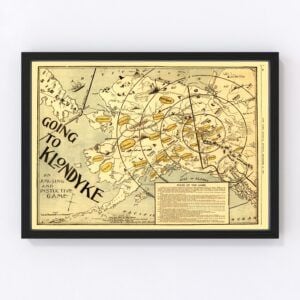
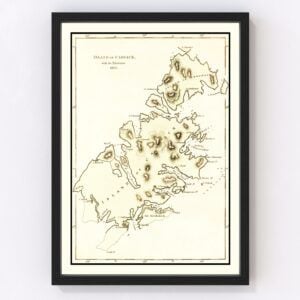
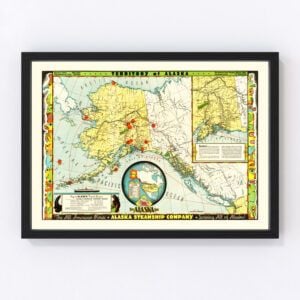
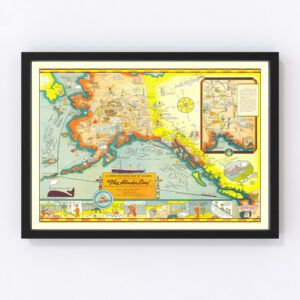
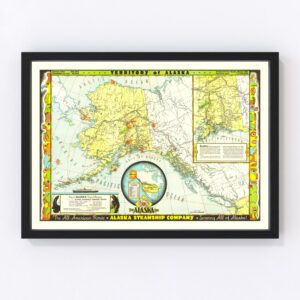
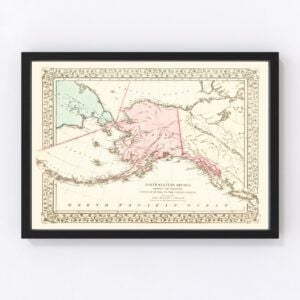
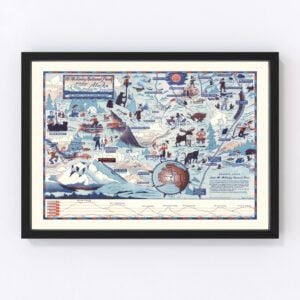
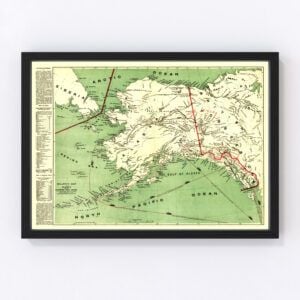
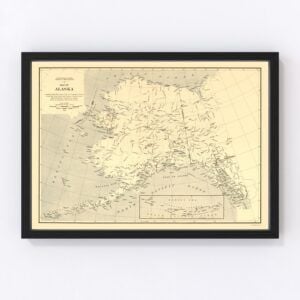
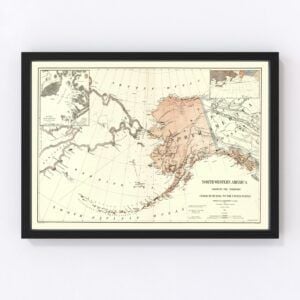
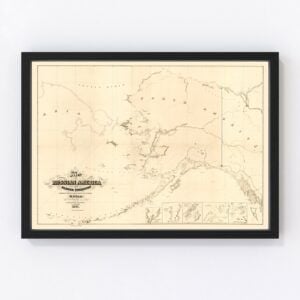
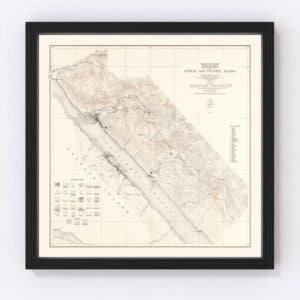
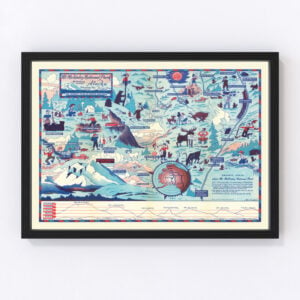
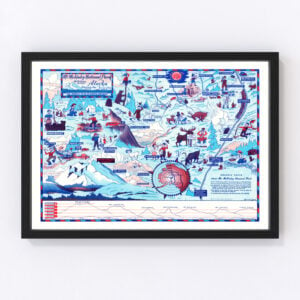
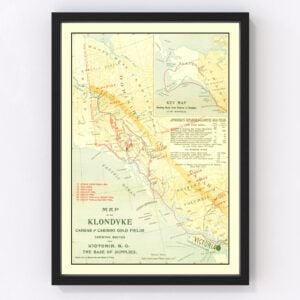
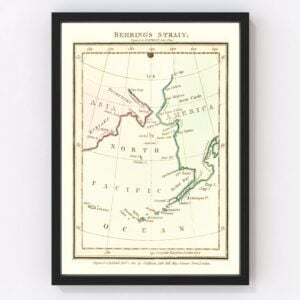
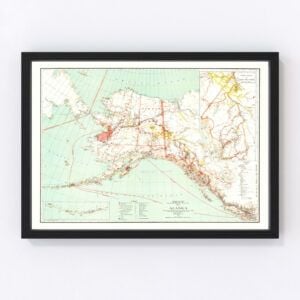
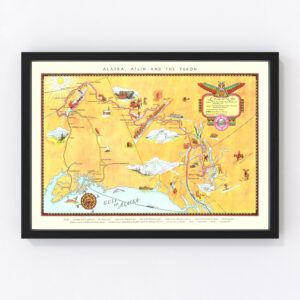
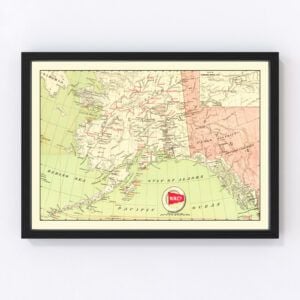
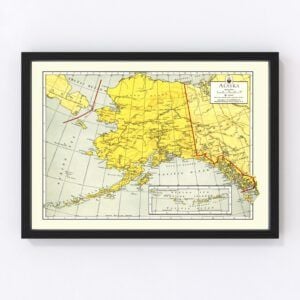
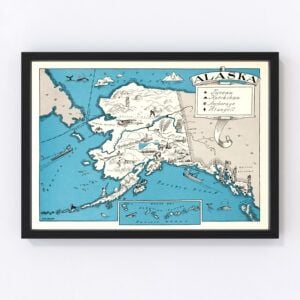
Vintage Alaska Maps
Alaska, located in the extreme northwest of North America, was the 49th state admitted to the union. It became a state in 1959 and is the largest U.S. state by area (it has more area than California, Texas, and Montana combined).
In our historic map archives, you’ll find a collection of vintage maps of the entire state of Alaska dating back to 1867, as well as a stunning 1937 map of Mt. McKinley National Park.
If there’s a specific Alaska map you’re looking for that you don’t see here, let us know, and we’ll check our archives. While our collections of vintage maps are extensive, there are still many more we’re restoring, and chances are we’ll have what you’re seeking.
About Alaska
Around 13,000 years ago, a 600-mile wide patch of land connected Russia to Alaska. It’s believed that the first people to arrive in what’s now Alaska came via this piece of land, which was called the Bering Land Bridge. The indigenous population inhabited the area for thousands of years before the Europeans arrived in the late 1700s.
About a hundred years later, in 1872, gold was struck near Sitka, on the Kenai Peninsula. The state’s first significant gold strike was eight years later in a creek in Juneau. Prospectors rushed to Alaska in these early years, and it wasn’t long before the state’s Gold Rush was in full swing.
Even the legendary Wyatt Earp showed up in Alaska, but it wasn’t necessarily for the gold. He was fleeing an indictment for murder following the infamous shootout at the OK Corral in Tombstone, Arizona. Earp opened a saloon in Nome, Alaska, that catered to miners, travelers, and the town’s residents. His drinking establishment (the Dexter Saloon) is long gone, but Nome City Hall was built where it once stood.
Like many Alaska towns, Nome has a small population (around 3,700 residents call the town home). The largest city in the state is Anchorage, with a population of just shy of 300,000. Fairbanks and Juneau (the state’s capital) come in next on the list, but their populations are much smaller, at around 32,000 each.
Today, Alaska has a reputation for being cold, and that’s with good reason—much of the land you walk on in the state is covered in a layer of permafrost. But Alaska is an outdoor lover’s paradise with vast land and wilderness that entices adventurers who love fishing, hiking, canoeing, kayaking, river rafting, hunting, skiing, snowboarding, and more. More than half the state is public land that’s federally owned. And then there’s Denali, Alaska’s crown jewel. The snow-capped mountain is the tallest in North America.
Tourism helps feed Alaska’s economy, as does fishing, oil production, research and development, and United States armed forces bases. However, the state’s top five largest employers are in the health, retail, and energy sectors. They are Providence Health & Services, Walmart, Safeway, Fred Meyer, and ASRC Energy Services.
Finally, when it comes to Alaska by the numbers, the figures are quite impressive. The state has 3 million lakes, 100,000 glaciers, 12,000 rivers, and around 34,000 miles of tidal shoreline.
